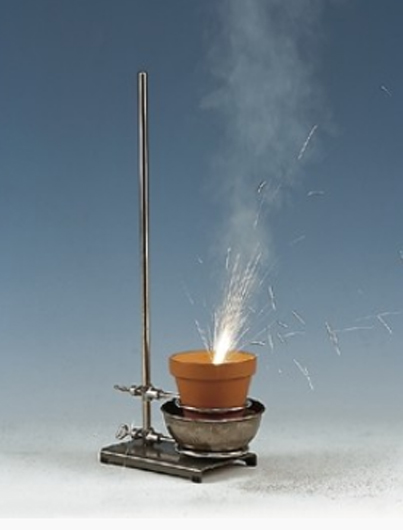Redox reactions between metals and metal oxides (thermite process)

The experiments described here are highly suitable for demonstrating the different affinity of various metals in view of oxygen. The less noble a metal is the higher its affinity to oxygen and the more thermal energy is released during its oxidation. The technical importance of the thermite process for the welding of iron parts is that it is relatively easy to produce large amounts of liquid iron and, thereby, to fill wider weld grooves. This is why this process is mainly used for welding thick steel beams, rail tracks, and machine parts.
- Impressive experiment to the thermite process
- Precise weighting information ensures successful execution
Test tubes 160×16 mm,FIOLAX,100pc
Mortar with pestle, 150 ml, porcelain
Iron powder xtra pure 1000
Test tube holder, up to d 22mm
Hose clip f.12-20 diameter tube
Right angle boss-head clamp
Iron basin,hemispherical, d 160mm
Hydrochloric acid 37 %, 1000
Lighter f.natural/liquified gases
Test tube, 160 x 16 mm, 100 pcs
Ignition sticks for thermite, 50 pcs.
Flower pot, clay, d. approx.12 cm
Ring with boss head, i. d. = 10 cm
Spoon, special steel
Aluminium, granulated 250 g
Safety gas tubing, DVGW, sold by metre
Test tube rack for 12 tubes, holes d= 22 mm, wood
Teclu burner, DIN, natural gas
Magnet, d = 10 mm, l = 200 mm
Universal clamp
Crucible tongs, 200 mm, stainless steel
Water, distilled 5 l
Hammer, engineers, 200 g
Retort stand, h = 750 mm
Standard sand,coarse 2500 g
- Redox reaction
- Thermite process
- Metals
- Welding of iron
- Aluminothermics
- Iron
- Aluminium
